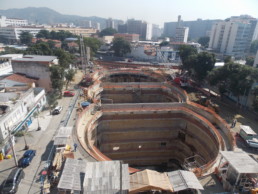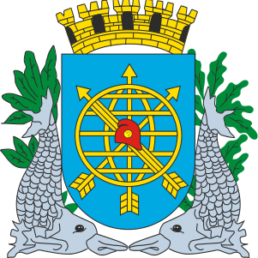Rio de Janeiro has built a range of flood-prevention infrastructure to help protect the vulnerable Tijuca region from river water overflows.
In 2012, the Brazilian city of Rio de Janeiro started construction on four underground reservoirs as well as a diversion tunnel for the Joana River in order to improve the resilience of the city’s Tijuca region. Excess water volume, which normally would overflow and cause flooding, will now accumulate in the tanks and be pumped out to the nearby bay. The reservoirs, one of which is complete, while the others are under construction, can accommodate a 25-year rainfall event. Revitalizing the Praça da Bandeira reservoir has transformed the area into a large, welcoming public space, including a 450-square-meter skating rink, fitness center for seniors, green areas, new lighting, and a 212-meter circuit for walking.
2,400 meter drainage tunnel prevents flooding of the Joana River and Mangue Channel
Cities100 – 2015
The flood-control plan also involves the construction of a diversion tunnel for the Joana River, to relieve the over-burdened Mangue Channel, which receives water from five different rivers. The Joana River course diversion will create a second outflow to the bay, decreasing dependence on the Mangue Channel. The outflow will also be faster because the water will travel a shorter course. Together, these flood-control plans will prevent flooding onto city streets, infrastructure damage, and the spread of waterborne diseases, and, at the same time, improve traffic conditions.

The challenge
Heavy rains in Rio de Janeiro cause flooding due to poor drainage or overflow, traffic congestion, damage to buildings and infrastructure, landslides, and diseases due to water contamination. The Great Tijuca area is particularly susceptible to landslides and flooding, due to its low-lying position. These projects are therefore necessary to protect residents and infrastructure from more frequent flooding.
Co-benefits
Economic The city anticipates that fewer floods, and their resulting damage, will help real estate values, revitalize local businesses, and prevent economic losses due to traffic congestion caused by flooding.
Health By reducing the risk of flooding, the city also reduces the spread of waterborne diseases.
Social More open and accessible green spaces encourage the use of public spaces and help catalyze civic engagement and a more enjoyable urban environment.
About Rio de Janeiro
Rio de Janeiro is the second-most populous municipality in Brazil and the sixth-most populous in the Americas. Part of the city has been designated as a World Heritage Site, named “Rio de Janeiro: Carioca Landscapes between the Mountain and the Sea”, by UNESCO on 1 July 2012 as a Cultural Landscape. Rio de Janeiro is one of the most visited cities in the Southern Hemisphere and is known for its natural settings, Carnival, samba, bossa nova, and balneario beaches. It is considered the second most beautiful city in Brazil, after the city of Curitiba.


